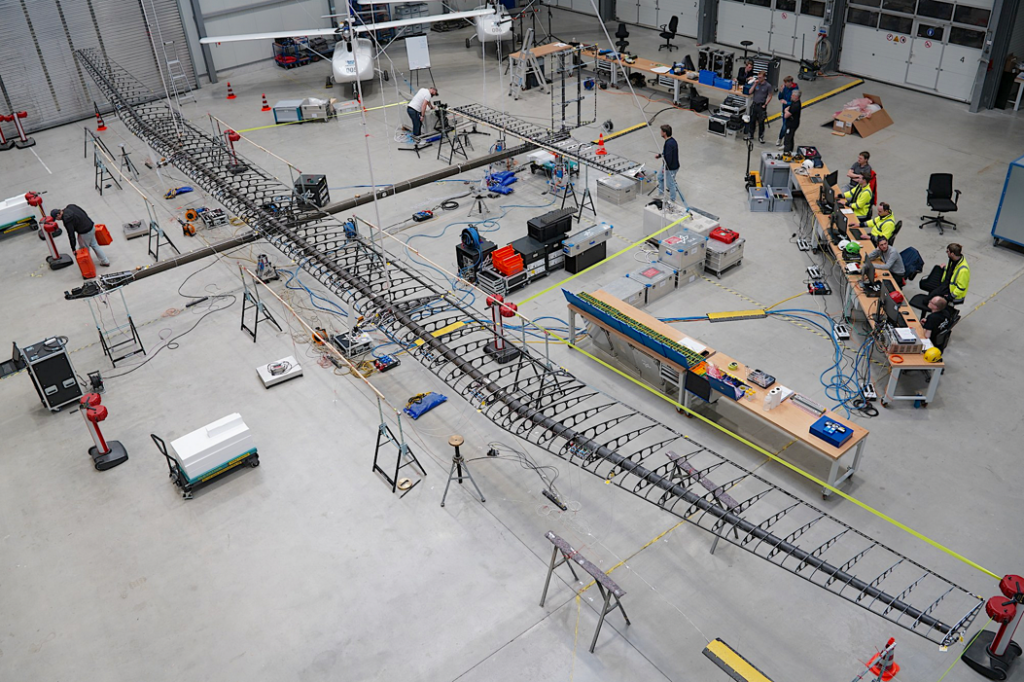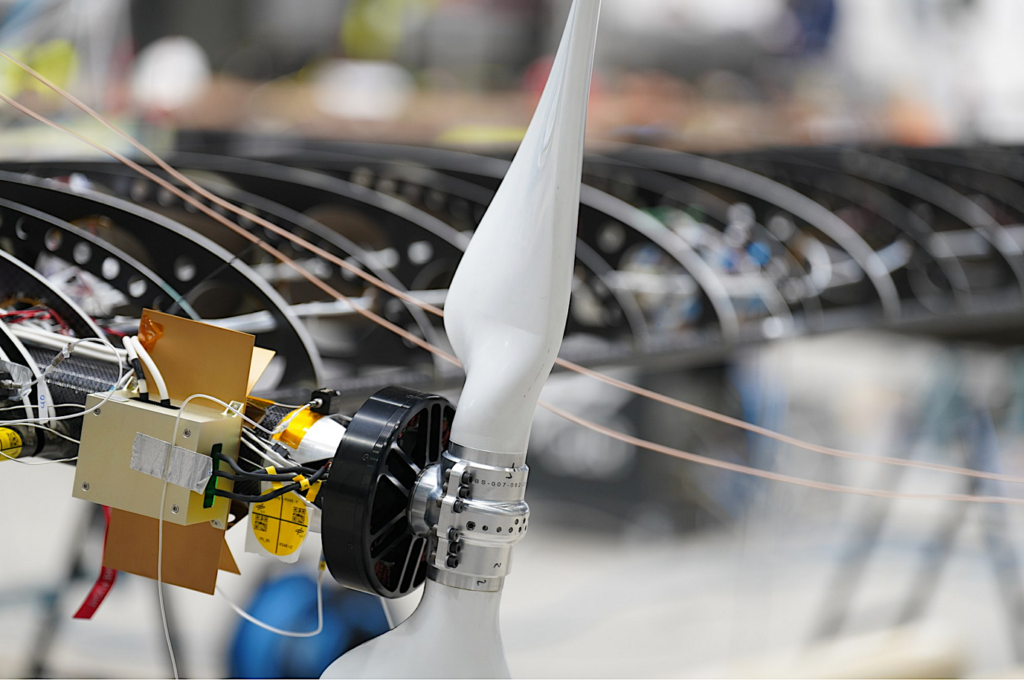The high-altitude uncrewed platform HAP-alpha will be capable of ascending into the lower stratosphere – at approximately 20 kilometres altitude © DLR
| Uncrewed high-flying solar aircraft hap-alpha passes key ground tests
- DLR’s high-altitude platform HAP-alpha has successfully completed ground vibration testing.
- HAP can remain in the lower stratosphere for extended periods, carrying out a variety of Earth observation and communication tasks.
- Extensive ground tests took place at DLR’s National Test Center for Unmanned Aircraft Systems in Cochstedt, Germany.
- The first low-altitude flight tests are planned for 2026.
- Focus: Aviation, flight systems technology
High-altitude uncrewed aircraft can remain in the lower stratosphere for extended periods, performing a wide range of Earth observation and communications tasks – from monitoring shipping lanes and supporting disaster response to providing internet access. The German Aerospace Center (Deutsches Zentrum für Luft- und Raumfahrt; DLR) has now taken an important step in the development of its own high-flying solar aircraft by successfully completing a Ground Vibration Test (GVT) on its innovative HAP-alpha high-altitude platform. Extensive ground trials took place at DLR’s National Experimental Test Center for Unmanned Aircraft Systems in Cochstedt, Germany. Further tests will follow and the first low-altitude flight trial is planned for 2026, subject to ideal weather conditions.
“With HAP-alpha, DLR is demonstrating its comprehensive systems expertise in the complete design, development and operation of a new and innovative aircraft, incorporating all disciplines,” explains DLR Executive Board Member for Aeronautics, Markus Fischer. “This illustrates our engagement in an important field of innovation, to strengthen Germany as a location for technology and business and to open up new perspectives for our public stakeholders in collaboration and knowledge exchange.”

HAP-alpha is a highly elastic, solar-powered flight platform with an extremely lightweight design, manufactured at DLR’s site in Braunschweig with a total mass of just 138 kilograms and a wingspan of 27 metres. The goal of this DLR project is to develop, build and operate a high-flying uncrewed solar aircraft. It will serve as a test platform, flying into the lower stratosphere at an altitude of approximately 20 kilometres. There, sensor systems and technologies for long-term use on a high-flying platform will be tested.

| Key milestone in flight readiness achieved
The now completed GVT is an important milestone for investigating the vibration behaviour of an aircraft. The goal is to identify critical vibrations that can occur during flight, takeoff and landing. This determines whether an aircraft is safe and thus airworthy. For HAP-alpha, the successful GVT marks a key step on the way to the first flight tests next year, which will involve basic flight manoeuvres at low altitude.
“The successful Ground Vibration Test is a significant step in the development of our high-altitude platform,” said Julian Sinske of the DLR Institute of Aeroelasticity, which conducted the GVT. “It shows that we are on the right track to overcoming complex aeroelastic challenges and preparing the platform for flight.”
During the GVT, numerous sensors were used to record the dynamic properties of the platform, which was fitted with electromechanical vibrators so that its vibration characteristics could be identified. A particular challenge of the GVT on HAP-alpha was its very lightweight and therefore very flexible design.
The acquired data will now be used to update simulation models and predict flight behaviour even more precisely – especially during manoeuvres, turbulence and gusts of wind. “This allows the project team to focus on the upcoming complete system tests, which will mark the completion of ground testing and enable subsequent flight testing,” adds HAP project leader Florian Nikodem from the DLR Institute of Flight Systems.

| Testing sensor systems and technologies
With HAP-alpha, DLR aims to build comprehensive expertise for the development of high-performance, high-altitude solar-powered aircraft. HAP-alpha will also serve as a carrier platform for testing sensor systems and system technologies under realistic operating conditions in the lower stratosphere. In addition to the platform itself, DLR is developing two sensor systems for use on HAP-alpha, as well as optimised evaluation methods.
The sensor systems are a high-resolution camera system (MACS-HAP – Modular Aerial Camera System High Altitude Platform) and a synthetic aperture radar (HAPSAR – High Altitude Platform Synthetic Aperture Radar). Through this work, DLR is developing sustainable, long-life high-altitude platforms that will enable a wide range of future applications in Earth observation, environmental monitoring and communications.
| DLR institutes and facilities involved in HAP-alpha
The HAP-alpha project is led by the DLR Institute of Flight Systems and involves close cooperation with 15 other DLR institutes and facilities:
- Institute of Flight Systems (project lead)
- Institute of Lightweight Systems
- Institute of Aeroelasticity
- Institute of Aerodynamics and Flow Technology
- Institute of Flight Guidance
- Institute of Software Technology
- Systemhaus Technik
- German Remote Sensing Data Center
- Microwaves and Radar Institute
- Remote Sensing Technology Institute
- Institute of Atmospheric Physics
- Institute of Electrified Aero Engines
- Institute of Networked Energy Systems
- Institute of Space Research
- National Experimental Test Center for Unmanned Aircraft Systems

